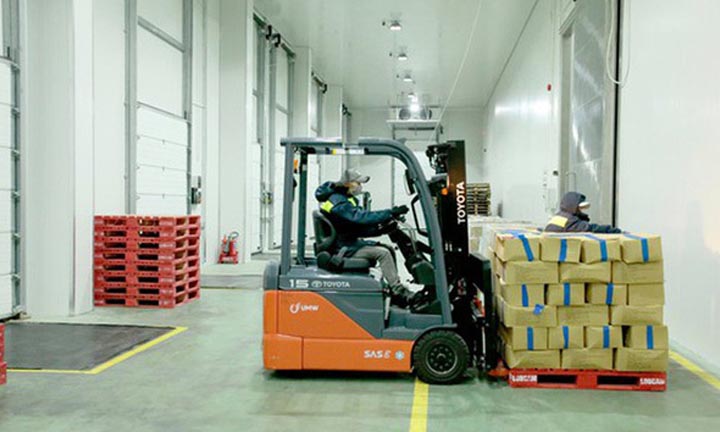SOURCE: Vietnam Net
Vegetables and fruits are considered a bright spot in the picture of Vietnam’s agricultural exports in the first months of this year. Many forecasts show that this export sector will have many development opportunities.
The current issue is removing bottlenecks from the stage of storage and processing to promote fruit exports.
Many types of fruits are favored by the European market
More and more Vietnamese fruits are exported to the world. From dragon fruit, rambutan, star apple, and lychee to mango, all have been available in many countries. Despite the impacts of the Covid-19 pandemic on the supply chain, Vietnamese fruit and vegetable products will maintain the export recovery momentum this year, especially fruits.
According to the Ministry of Agriculture and Rural Development (MARD), in the first quarter of this year, fruit and vegetable exports nearly touched US$950 million, up 6.1 percent over the same period last year. Last year, when the EU-Vietnam Free Trade Agreement (EVFTA) became effective from the beginning of August, in September, Ben Tre Province exported the first batch of fruits to Europe, including 20,000 fresh coconuts, 12 tons of green-skinned pomelos, and 3 tons of dragon fruits. In 2020, due to the Covid-19 pandemic, the export of fruits and vegetables decreased, but the value still reached $3.26 billion, showing the importance of this potential commodity.
Ms. Mai Thi Hong, Vietnam Coordinator of the Netherlands Vietnam Horti Business Platform, said that 15 types of Vietnamese fruits that are favored by the EU include dragon fruit, mango, pomelo, rambutan, mangosteen, jackfruit, durian, star apple, and coconut.
In the Mekong Delta, the area of fruit trees has continuously increased. In 2010, the area of fruit trees was 287,000 hectares. By 2020, it rose to 377,000 hectares. However, the long-standing shortcoming of fruits is that the processing stage remains weak.
Dr. Nguyen Quoc Toan, Director of the Agro Product Processing and Market Development Authority under the MARD, noted that the weakness of Vietnamese agricultural products is that the post-harvest loss is still high, depending on the sector but ranging from 10 percent to 25 percent, and the method of preservation is simple and outdated. Logistics remains weak, especially means of transport, storage, and cold storage. Meanwhile, there are a small number of deep-processed products.
The breakthrough from preservation and processing
Nearly 10 years ago, Mr. Pham Tien Hoai, General Director of Hanh Nguyen Logistics, acknowledged the strength of the fruit tree growing areas in the Mekong Delta and invested in many processing factories in Hau Giang Province.
According to Mr. Hoai, logistics costs in Vietnam’s agricultural product industry currently account for about 30 percent of product costs, while this figure in Thailand is only 12.5 percent, and the global average is 14 percent. The reason is that the distribution channel from fruit production to fruit export in the Mekong Delta has to go through several intermediaries.
Cau Duc Pineapple in Hau Giang Province is a well-known brand name. However, pineapples have to go through many stages. Farmers buy seeds and materials to grow pineapple plants in their fields. After harvesting, they must transport pineapples to fruit barns to sort and pack, then transport them to the processing factories. Here, they will continue to sort, wash, pack, and apply irradiation treatment on pineapples. After that, pineapples will be stored in warehouses or exported by sea or air; or exported to China through cross-border trade, Mr. Pham Tien Hoai cited.
This is the reason why fruits in the region fall into the situation of bumper crops, low prices at the peak of harvest. For a long time, fruits of the Mekong Delta have suffered double disadvantages because they have to go through many intermediaries, and it takes more time to transport them to Ho Chi Minh City for irradiation before exporting. However, the situation has been improving as many enterprises have invested deeply in the stage of processing and exporting fruits in the Mekong Delta.
For instance, the Hanh Nguyen Logistics Center located in Hau Giang Province was put into operation at the end of last year. This center has an automated warehouse with a capacity of 150,000 tons and 200 kiosks to facilitate 200 traders to open an agricultural product trading floor in the region.
Especially, the center also has an irradiator for fruits to have a “passport” for export to many countries. For a long time, for mangoes, after harvesting, within 3-4 days, farmers have to sell them urgently because they will rot. The pressure to close the deal is limited within 7-10 days.
With the appearance of Hanh Nguyen logistics center, Mr. Pham Tien Hoai hopes that the company will help farmers to select, wash, classify, pack, irradiate, and store mangoes in cool storage with the most appropriate temperature. Mangoes will have an extended shelf life of up to 90 days. During this period, farmers will have the right to negotiate prices fairly and transparently.
Mr. Le Minh Hoan, Minister of Agriculture and Rural Development, said that processing is one of the important stages in the value chain of the industry. Currently, we only have about 20-30 percent of agricultural products processed for export. Vietnam’s agricultural sector needs to pay attention to the processing stage. Processed products will solve the situation of oversupply, help to create added value, bring the development of agricultural products into the law of supply and demand.

